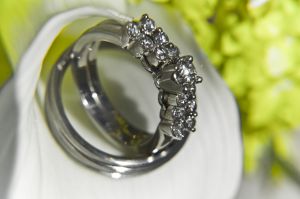 Diamonds are a girl’s best friend and no woman is going to disagree with that. The diamond sets itself apart from other rocks with its mesmerizing brilliance and unique beauty. It is also a sign of ultimate commitment and love. Of course, diamonds do not come cheap. So, it is important to choose diamonds wisely. When buying a diamond, whether for an engagement ring or wedding ring, you must remember the Four C’s. This article will focus on Cut and Clarity, while Carat and Colour will be discussed in Part 2.
Diamonds are a girl’s best friend and no woman is going to disagree with that. The diamond sets itself apart from other rocks with its mesmerizing brilliance and unique beauty. It is also a sign of ultimate commitment and love. Of course, diamonds do not come cheap. So, it is important to choose diamonds wisely. When buying a diamond, whether for an engagement ring or wedding ring, you must remember the Four C’s. This article will focus on Cut and Clarity, while Carat and Colour will be discussed in Part 2.
Cut
Cut refers to the style used by the cutter or jeweler when shaping a diamond for polishing. A good jeweler should be able to take into consideration the symmetry and style of cutting a diamond. If a diamond is cut poorly, it will be less brilliant and sparkly. When a diamond is cut too shallow, light will escape from its sides instead of being able to reflect back out of the diamond to give it brilliance. On the other hand, if it is cut too deep, light will escape from the booth. So, it is important that you choose a diamond that is cut in the exact proportions. The price of the diamond highly depends on its cut.
After the jeweler has successfully cut the diamond, it will now be ready for shaping. The most common diamond shapes are the following: round brilliant, oval, marquise, pear, heart, emerald, princess, radiant, cushion, asscher and trilliant.
Clarity
Clarity refers to the existence, or lack thereof, of ‘inclusions’ in the diamond. The less inclusions and blemishes a diamond has, the more valuable it is. A diamond without any inclusions or blemishes under the 10x magnification is considered a flawless diamond. The clarity of diamonds can be categorised into five: (FL) Flawless, (IF) Internally Flawless, (VVS1-VVS2) Very, Very Slight Inclusions, (VS1-VS2) Very Slight Inclusions, (SI1-SI2) Slight Inclusions and (I1-I2-I3) Included.





















